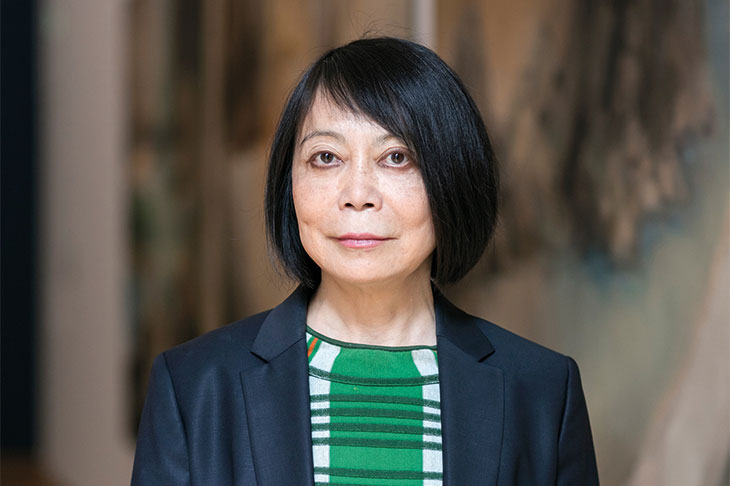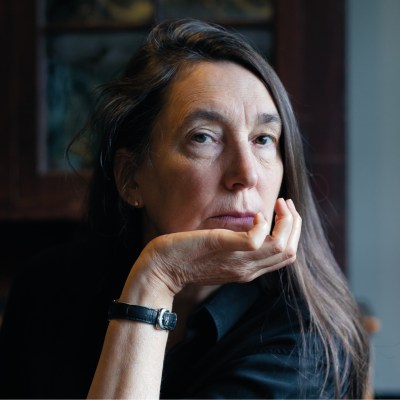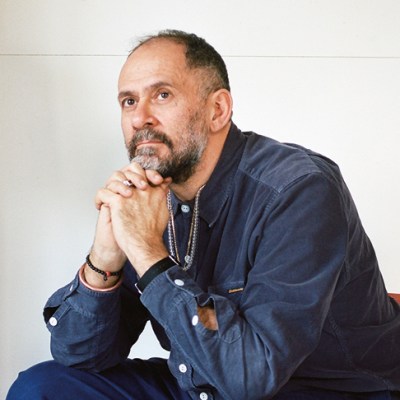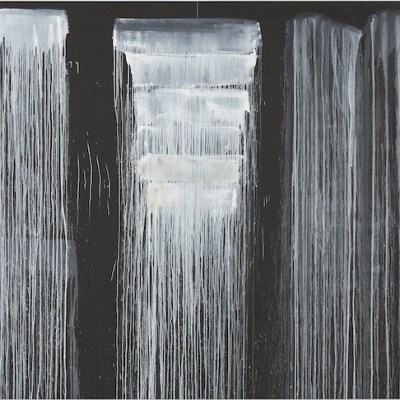Working across drawing, painting and ceramics, the Japanese-Swiss artist Leiko Ikemura continues to seek adventure in her art, she says, as a major exhibition opens at the Kunstmuseum Basel
The exhibition in Basel has the subtitle ‘Toward New Seas’ – taken from the poem ‘Nach neuen Meeren’ by Nietzsche. What inspires you about that phrase?
Years ago, I was very interested in his writing and philosophy. But the influence is not so direct now: visually, it’s a very beautiful phrase, and I like how the words stand for my situation, as I feel like I’m departing once again – it’s like a new start. Also, the exhibition in Basel follows one at the National Art Center in Tokyo; Japan and Switzerland are both homes for me, countries to which I am very connected – I have a Swiss passport, and really decided to become an artist when I came to Zurich in 1979. For me these exhibitions have not only been about coming back – they are also about departing again.
So the phrase also encapsulates your artistic process?
I have always set off in new directions, and maybe now more than ever: as my work gets more mature, it feels dangerous for me to get too comfortable. I’m always looking for further adventure in the art. With these exhibitions, it was very important to tell myself and my audience that they are not retrospectives, that they’re more about the present and the future.
I’ve started to accept the past, which I always avoided until now: these exhibitions have helped me come to terms with my earlier work, even that from the 1970s when I first studied art in Spain, or the works that I thought were very immature from the ’80s. The exhibition at the Kunstmuseum Basel starts with the drawings I did in the ’80s, when I was not even 30 years old – I didn’t show them for quite a long time, not because I didn’t take them seriously, but because I thought I should develop more as an artist. This is the first time that I’ve been able to accept the past as it was, as it is.
Untitled (1986), Leiko Ikemura. Kunstmuseum Basel. © 2019, ProLitteris, Zurich

Your work encompasses many media – painting, ceramics and sculpture in bronze – but drawing has been a constant. What prompted you to take up drawing in the first place?
Drawing is so immediate and so honest. For me, being honest is very basic and important; the medium makes that happen. That’s why I started with drawing and continue with it in a very different way – there must be a hundred different possibilities of treating drawings, and sometimes people think there are a hundred different people in me, because my drawings from each period are so distinctive. Perhaps it’s my way of looking for something, or exploring different possibilities.
In the ’80s, when I was first confronted with the Swiss art scene, there were very good curators like [Harald] Szeemann and Jean-Christophe Ammann, and also many artists, like Markus Raetz, Dieter Roth, Fischli and Weiss and others, who were very active in the medium of drawing as its own thing. It wasn’t about drawing as a way of preparing for painting or sculpture, but as an autonomous medium. That opened something up for me. I was very interested in automatic drawing, and I read a lot about Jung and Freud, and about psychology – for me, drawing almost became a way of travelling into the unconscious. It was not about looking at the world, about mimesis and copying what we see – not at all, it was more like the opposite. I almost closed my eyes and made a lot of drawings quite quickly, and then I slowly found out my own archetypes, which were also common to other cultures.
Your images have incorporated scenes of violence and great tenderness. Looking back, do the contrasts across your body of work surprise you?
The contrasts have their own naturalness, as the work has changed according to changes in my way of living and way of thinking. In the ’80s, I was a fighter in a way, and the work was quite aggressive: it was a time of ‘wild painters’ – their stroke was strong, their work and themes were violent. There was a turning point in the ’80s, when I had a crisis, and a retreat in the mountains in Switzerland helped me have more distance on what I had done.
Skier on Maloja Lake (1990), Leiko Ikemura. Toyota Municipal Museum of Art. Photo: Lothar Schnepf; © 2019, ProLitteris, Zurich

In the early ’90s, I started afresh and began to paint very small paintings. It wasn’t about scale, it was more about the content I wanted to express in my paintings. It felt to me like my art was reborn: the limitations of the strokes for small paintings gave me a new gesture, a new, less narrative-based language. At the same time I intensified my work with ceramics, making new-born figures that formed from the very simple idea of a vase. These ceramic creatures evolved themselves, transforming into ‘girls’. I realised that I had been taught to leave behind childhood quickly, and that I missed what it was to be a girl, recalling the sense of being alone, the unsureness, before the world became sexualised.
Girl in Yellow (1995), Leiko Ikemura. Photo: Jörg von Bruchhausen; courtesy Leiko Ikemura/Tony Wüthrich Gallery, Basel; © Pro Litteris, Zurich 2019

The Kunstmuseum Basel has been collecting your works since the 1980s. How significant has your relationship with it been for your career?
It’s been very important. I’m so thankful to certain people, like Dieter Koepplin, the former director of the department of prints and drawings. He was one of the first people who took my work seriously and was brave enough to collect it from the beginning. He always looked out for works where I had started something new, or even when I was failing. I learnt a lot from his way of seeing art as a process.
I had one of my first serious institutional exhibitions at the museum in 1987, when I was very young, and that opportunity to show my works as an emerging artist was quite something. But after Koepplin’s departure, for around 20 years my works were sleeping there – I didn’t realise that there were so many of them in the collection. With the new director, Josef Helfenstein, the situation changed. Anita Haldemann, now head of the department for prints and drawings, invited me to see them, and showed me almost 130 pieces, mostly drawings. It was a very exciting and also a happy moment.
Your work has often engaged with Japanese history – with the country’s experience during the Second World War, and more recently with the Fukushima disaster. How does art begin to approach the scale of such tragedies?
I don’t make directly political work, but I have always felt that there is a sense of long-term, collective responsibility attached to such events and that there is a challenge to deal with them in art. I feel committed to history, not as past but as a nowness: these are not only Japanese tragedies, but human tragedies. For me, it is always important to confront the dark side, as well as exploring the potential for lucidity when the scale is extended from the personal to the universal.
Kamikaze (1980), Leiko Ikemura. © ProLitteris, Zurich, 2019

‘Leiko Ikemura: Toward New Seas’ is at the Kunstmuseum Basel until
1 September.
From the June 2019 issue of Apollo. Preview and subscribe here.



